| |
"The weirdest great movie ever made." |
| |
Dave Kehr in The Chicago Reader* |
If you're coming to Orson Welles' 1947 The Lady from Shanghai for the first time, I'd keep your wits about you. Its characters are introduced and defined on the run, the mysteries quickly mount and the story unfolds at a take-no-prisoners pace. Indeed, legend has it that Columbia Pictures president Harry Cohn offered $1,000 to anyone who could explain the plot to him, and that was before the film was substantially shortened by the studio execs. I've not seen that edit, and the chances are now that no-one ever will again, but based on what survives I think I'd be willing to take Cohn up on that bet.
Irish seaman Michael O'Hara (Orson Welles) – aka 'Black' Irish – is bewitched by the beautiful Elsa Bannister (Rita Hayworth), whom he briefly flirts with then comes to the aid of when she's assaulted by a small band of ruffians. Clearly attracted to O'Hara, Elsa offers him a job as boson on a yacht owned by her husband Arthur Bannister (Everett Sloane), a celebrated criminal lawyer with an unbroken record of wins. O'Hara turns her down, but the following day is sought out by Bannister and offered the same job. Once again O'Hara declines, but after agreeing to discuss the deal over a few drinks, he is forced to carry the drunken Bannister back to the yacht in question and ends up taking the job regardless.
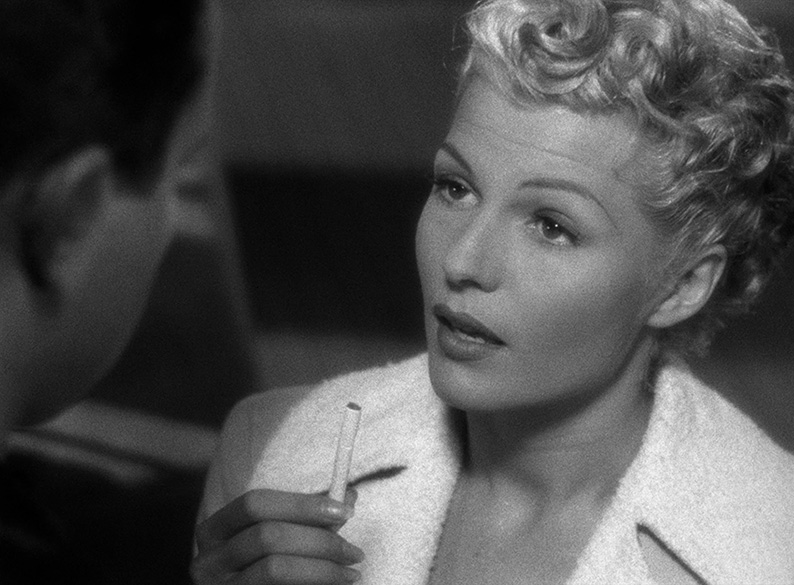
Once they set sail, it becomes clear that Elsa has the hots for O'Hara and he definitely fancies her, but seems reluctant to become involved with a woman who is married to his boss. Their attraction to each other is observed by Bannister's verbally excitable partner George Grisby (Glenn Anders), information that Bannister does not respond to with the expected degree of outrage or even surprise. On their way to an island picnic, Sidney Broome, a detective in Bannister's employ who runs a side-line in attempted blackmail, tries to warn his boss that someone is trying to kill him, a fact that Bannister is already tetchily aware of. A short while later Grisby makes O'Hara a most unusual proposition, that he will pay him $5,000 to kill someone for him, and that the someone in question is Grisby himself.
By this point, even the more attentive viewer will likely be wondering what the hell is going on, but that's very much part of the film's considerable pull. All will be revealed, but the route to the truth will not be straightforward and will have its share of satisfying surprises. The groundwork is intriguingly laid, with both Elsa and her husband eager for O'Hara to join the boat crew for seemingly different and not always obvious reasons. And despite his troubled past – he once killed a man and is at one point described as a "notorious waterfront agitator" – O'Hara comes across as a naïve innocent here, talked into accepting a job that he never really wanted and taking people at their word even when logic suggests that distrust would be more prudent. The web of intrigue this creates is seductively spun, a whodunit where even the crime itself remains teasingly under wraps and whose eventual execution points the finger of guilt at the only person we know for a fact couldn't have done it. This gives rise to a criminal trial that borders on the farcical, where an easy-going judge indulges jury-pleasing grandstanding, Bannister gets to comically cross-examine himself, and the questioning of witnesses is disrupted by laughter and explosive sneezing.
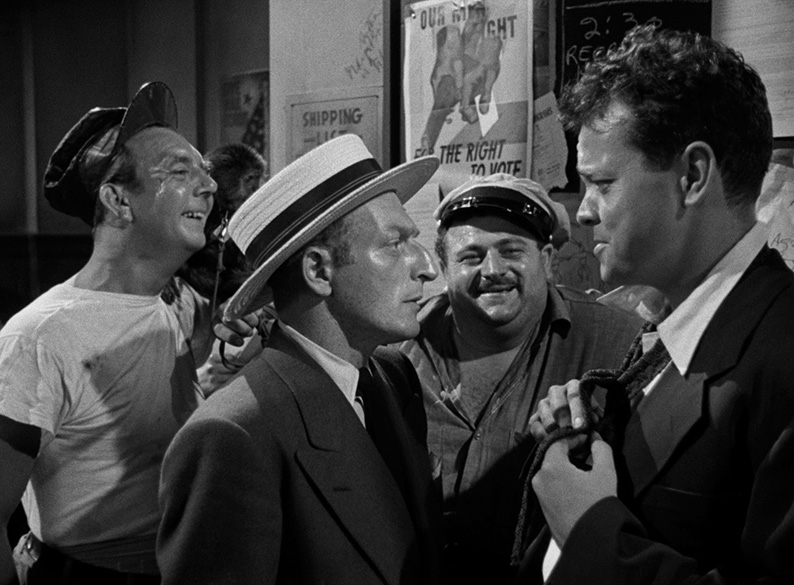
On his commentary track, Peter Bogdanovich claims that he was so enraptured by the technical handling that it took him four viewings to unravel the plot. The film certainly captivates in its technique, some of which we do have to chalk up to chance – the arresting use of facial close-ups was down in part to reshoots insisted by the studio after Welles elected to cover whole scenes in mid or wide shot, and the film's sometimes hurried pace is doubtless influenced by the studio's decision to cut a 155-minute film down to 87 minutes, stripping it of over an hour of its footage. But Welles still puts his directorial stamp on every scene, from the consistently interesting and sometimes subtextually suggestive angles from which he covers the action to the richness of the character and background detail. The dialogue and its delivery also provide their fair share of treats, as lines that would be clearly punctuated by others dovetail seamlessly into each other, and words that have potential dramatic weight or importance are murmured or delivered in a deceptively offhand manner. Repeatedly, there's a sense that characters are saying one thing whilst thinking another and simultaneously pondering on the implications of their words, and there's an often playful aspect to how this plays out, a signature element of Welles' direction of actors since Citizen Kane, where scripted dialogue entertainingly overlaps and gives way to improvisation.
Almost every character is given interesting traits or bits of business to enable them to clearly register, from the handicap that forces Bannister to walk robotically with sticks (a decision apparently triggered by Welles' concern over whether a radio actor like Everett Sloane would move convincingly on screen) to Glenn Anders' unsettlingly child-like excitability as Grisby. Welles also makes the best of his always interesting and sometimes unusual locations, whose tactile reality is regularly punctuated by studio ordered pick-ups that see the real world give way to the slightly dreamy artificiality of back-projected close-ups. Not all of Welles' character-shaping decisions went down so well, with the transformation of Rita Hayworth from the long-haired readhead pin-up of movie legend to a short-cropped blonde having attracted its share of blame for the film's poor box-office performance, though Hayworth herself was apparently enthused by the image change and delivers a correspondingly strong performance as Elsa. Indeed, the performances across the board are as entertainingly colourful as you'd expect from on-form Welles, none more so than Glenn Anders' extraordinary turn as Bannister's partner, George Grisby, a potentially dangerous walk on the performance wild side that runs the risk of toppling into camp absurdity but never hits a single wrong note. Only Welles' own slightly suspect 'oirish' accent may raise a few eyebrows, but there's still so much to enjoy in his performance – from his occasional, Charles Foster Kane-like amusement at his own words to a delicious monologue in which he compares Bannister, Elsa and Grisby to sharks on a cannibalistic feeding frenzy – that it seems a little petty to carp.
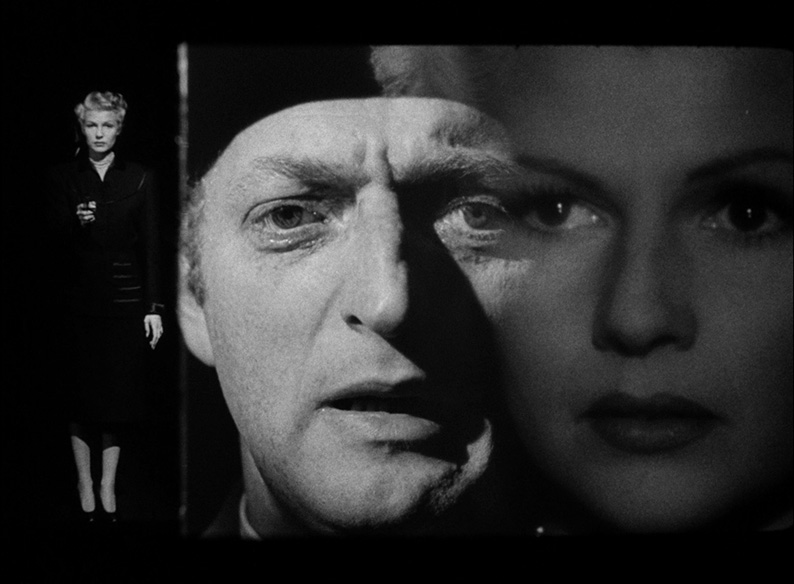
It builds to a visually striking (though heavily studio-truncated) climactic funhouse chase, which itself is then topped by a rightly celebrated hall-of mirrors shoot-out in which narrative cinema collides head-on with avant-garde to genuinely stunning effect, and whose conclusion confirms the film's well-earned noir credentials. The problematic relationship between O'Hara and Elsa has been frequently cited as a commentary by Welles on his failing marriage to Rita Hayworth, which ended in divorce just a short while later, yet both Welles and Hayworth have poured water on this theory, and on this very disc Hayworth recalls working on the film and with Welles with great enthusiasm. But in a film this richly textured it's perhaps inevitable that theorists will find so much hidden meaning and so many points of worthy of detailed discussion – I've little doubt that whole essays have been written about the hall of mirrors climax and the intriguing use of San Francisco locations alone.
We are, of course, left with an aching sense of what might have been had the studio not chopped over an hour from the film, messed with Welles' original sound mix, and commissioned a music score that endlessly recycles the song sung by Hayworth to cheaply romanticise moments, or to overstate others that Welles intended should play without music at all. That what survives is still so cinematically thrilling and so enthralling as drama is a testament to just how exciting a filmmaker Welles was when he built up a head of creative steam. And a tad prejudiced through I may be, I'll still take butchered Welles over the unmolested work of a good many of his highly regarded contemporaries.
Oh, how I love the way well-restored monochrome noir cinema looks in HD. The Blu-ray in the dual format set sports a delicious-looking 1.37:1 1080p transfer from a Sony 4K restoration that gets just everything right – the black levels are deep without crushing the shadow detail, the contrast range handsomely rendered and the image is consistently crisp, something particularly evident in those sometimes arresting facial close-ups. The image is clean of any dust and former damage and a fine level of film grain is visible throughout. Excellent.
It's worth noting that the image in the hall of mirrors sequence appears to be matted at the top and bottom of screen, which effectively alters the aspect ratio to 1.66:1. From what I can gather, this is down to the optical processes used to create this sequence and is not an issue with the transfer. 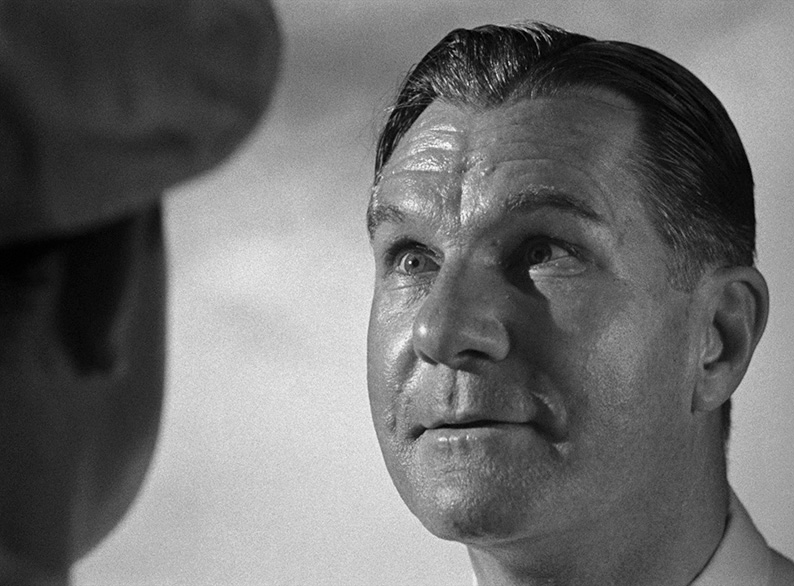
The Linear PCM mono 1.0 soundtrack is pleasingly clear and shows no trace of any damage or background hiss or fluff. The louder notes of the music are a little shrill, but this is still a fine job.
Optional subtitles for the deaf and hearing impaired have been included.
Audio Commentary with Peter Bogdanovich
Ported over from a 2003 Columbia DVD release, this commentary by filmmaker Peter Bogdanovich, also the author of This is Orson Welles, is not screen-specific but appears to have been edited to ensure that his comments about specific scenes play under the sequences in question. For much of the time he does not comment on what's taking place on screen at all. But fear not, as what we have instead is an information feast, with Bogdanovich reading extracts from interviews he conducted with Welles, whose responses are always interesting and frequently enlightening. We get some specifics of the things Welles disliked about the changes made by the studio, and the changes made to soundtrack and the imposed music score are covered in some detail. Bogdanovich also takes time to pass comment on elements of the film he admires and provides some background information on its making, and there's a nice story about Welles directing the lighting on Citizen Kane because, as a newcomer to filmmaking, he simply wasn't aware that this was cinematographer Gregg Toland's job. A really worthwhile and informative track.
Simon Callow on The Lady from Shanghai (21:20)
Actor, director and Welles biographer Simon Callow talks about The Lady from Shanghai, a film he clearly admires a great deal, although he does twice suggest he has some issues with Welles' own performance, a point I wish he had expanded on a little. But there's plenty of good stuff here, on the background to the project, the shoot, the actors, and the studio interference, though a couple of his stories do differ slightly in their detail from the versions told by Peter Bogdanovich on his commentary track. Intriguingly, he proposes that the problems Welles had during his filmmaking career were down to the him being constantly outwitted by people less intelligent than him.
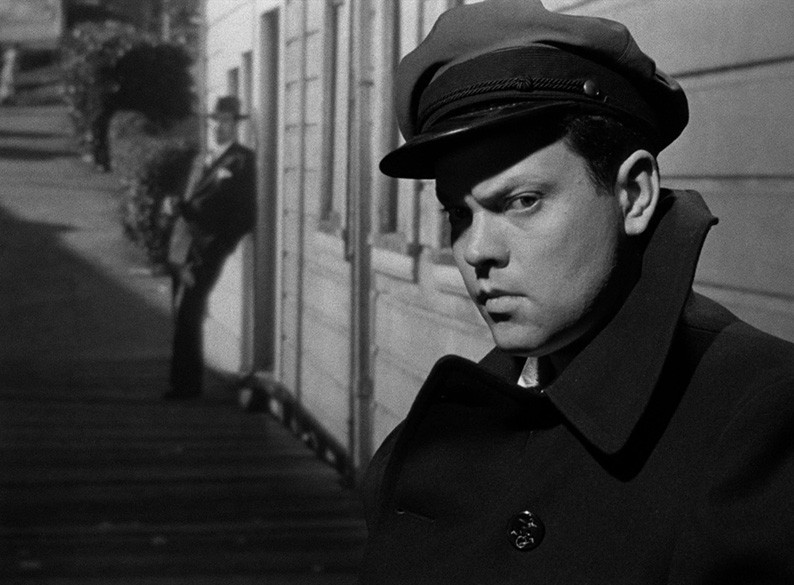
An Interview with Rita Hayworth (4:01)
Recorded in 1970 for the French TV programme Pour le cinéma, whose annoying habit of slapping large French subtitles right across the faces of interviewees is in full evidence here. Hayworth talks about working in France and recalls working on The Lady from Shanghai, which she regards as one of her very best pictures. She also loved working with Welles on the film.
A Discussion with Peter Bogdanovich (20:46)
This is a tricky one, as while useful in itself, it does frequently double up on the commentary, though there is just enough extra material here to make it worth a listen.
Joe Dante Trailer Commentary (2:27)
An episode of the Trailers from Hell series in which director Joe Dante salutes some of the things about the film that he admires and describes it as "an art film designed to fit into a standard studio box."
Theatrical Trailer (1:50)
A clunky trailer built almost solely around O'Hara's relationship with Elsa. "The exciting story of a reckless woman..." the splashed text assures us.
Image Gallery
60 slides of high quality promotional stills and posters, plus a small selection of welcome behind-the-scenes photos.
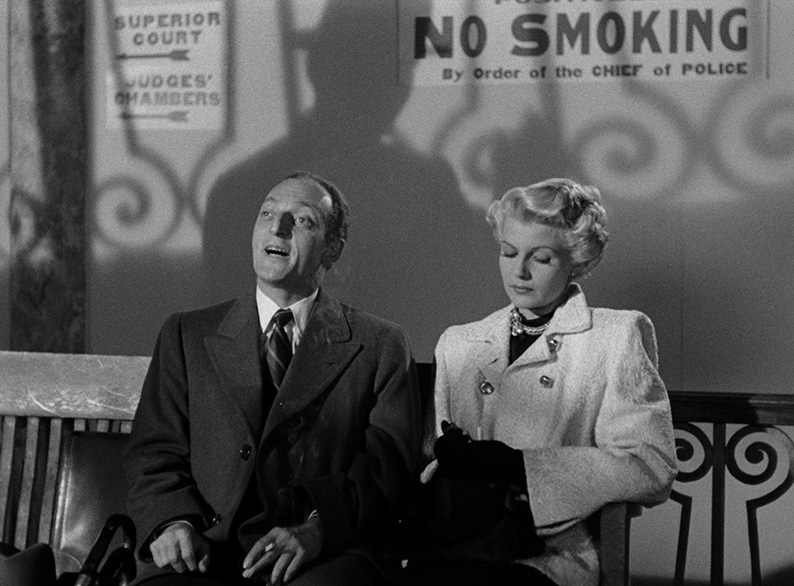
Booklet
Another terrific booklet from Indicator kicks off with a superb and detailed essay on the film by Samm Deighan titled A Bright, Guilty World: Magic and Madness in The Lady from Shanghai. This is followed by a sizeable extract from William Castle's 1976 memoir Step Right Up!... I'm Gonna Scare the Pants Off America in which he entertainingly recounts how the film came to be and his experience working with Welles on it – Castle later achieved notoriety as the creator of gimmick-boosted horror treats such as The Tingler and The House on Haunted Hill but worked as associate producer on The Lady from Shanghai. We then have a reproduction of the entire nine-page memo sent by Welles to studio bigwig Harry Cohn detailing his unhappiness with the changes made by the studio to his original cut, which gives a good idea of just what was altered and how it affected the film. There's also a detailed piece on the restoration, including a couple of before-and-after comparison screens and some pertinent words on the process from Grover Crisp, Executive Vice President of Asset Management, Film Restoration and Digital Mastering at Sony Pictures Home Entertainment (a job title that could be used to test lung capacity), Sony Colourist David Bernstein, and CEO of MTI Film, Larry Chernoff. The booklet also includes credits for the film and a few quality stills. What a great read this is.
The studio recut it, rescored it and messed about with the soundtrack, but what remains is still superb cinema, a winningly scripted, performed and directed noir thriller from one of American cinema's most unpredictable but inventive filmmaking giants. Research suggests the Blu-ray transfer in this dual-format set is as good as the film has ever looked on any home entertainment format and the special features are first-rate, with the Bogdanovich commentary and the booklet the twin jewels in the crown. Highly recommended.
|